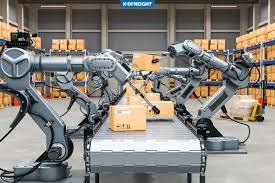As Complementary Metal-Oxide-Semiconductor (CMOS) technology continues to evolve, it faces significant scaling challenges. Shrinking transistor sizes, reducing power consumption, and improving performance have become increasingly difficult as CMOS approaches its physical limits. However, the integration of advanced materials, such as silicon-germanium (SiGe) and high-k dielectrics, is helping to overcome these limitations. Erik Hosler, a prominent figure in semiconductor technology, recognizes the importance of these innovations, noting that they are essential in ensuring CMOS remains viable for next-generation applications.
The Role of Silicon-Germanium in CMOS
Silicon-germanium is key in overcoming CMOS scaling challenges by improving electron mobility and reducing power consumption compared to pure silicon. SiGe enables transistors to switch faster and use less power, making it essential for shrinking device sizes. It’s widely used in high-performance chips for 5G, data centers, and AI, allowing CMOS technology to push past traditional silicon limits and extend Moore’s Law despite physical constraints.
Additionally, SiGe’s ability to enhance signal integrity makes it ideal for high-frequency applications, such as millimeter-wave technology in 5G networks. By reducing power loss and heat generation, SiGe also contributes to improved energy efficiency in data centers and AI workloads. As chip manufacturers continue to seek materials that can outperform pure silicon, SiGe is becoming a critical enabler of next-generation semiconductor technologies.
High-k Dielectrics: Addressing Leakage Issues
High-k dielectrics, like hafnium oxide (HfO2), are crucial for CMOS scaling as traditional silicon dioxide (SiO2) no longer prevents leakage currents at thinner gate layers. High-k materials allow for thicker gate oxides without performance loss, reducing power consumption, improving efficiency, and enabling further transistor miniaturization to maintain Moore’s Law and create faster energy-efficient processors.
The Future of CMOS: Beyond SiGe and High-k
While SiGe and high-k dielectrics have been pivotal in extending the limits of CMOS technology, the future will likely see the incorporation of even more exotic materials. Erik Hosler emphasizes that “The integration of emerging materials and advanced processes into CMOS technology is critical for developing the next generation of electronics. These innovations will drive new applications and ensure that CMOS remains a foundational technology.” Innovations such as III-V semiconductors, carbon nanotubes, and 2D materials like graphene are on the horizon and could provide even greater performance boosts and efficiency improvements.
These new materials will be essential in driving continued innovation in the semiconductor industry, allowing CMOS to remain a foundational technology in computing, communication, and beyond.







